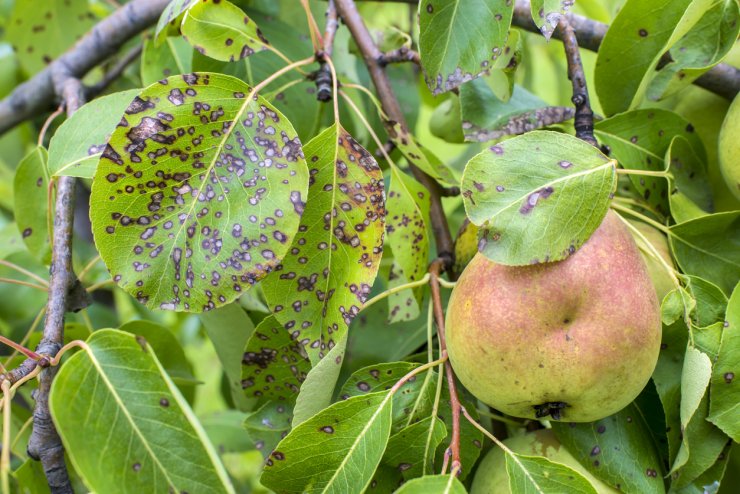
Sick pear tree.
Try some of these techniques for avoiding pear disease or damage in the first place:
Prune judiciously
Over-pruning your pear trees can create new opportunities for terminal shoot growth, and with it new fungal or pest problems.
Keep nitrogen to a minimum
You can have too much of a good thing. Giving your pear trees too much nitrogen can spur excess growth—which in turn can invite pests and/or draw growing energy to developing leaves instead of new fruit.
Build a barrier
For young saplings and trees that draw too much attention from local wildlife, consider putting tree guards, a hardware cloth cage, or even fencing around your trees to keep the tender leaves and growing fruit safe.
Plant disease-resistant pear varieties
Many pear varieties have been developed specifically to resist pear diseases—including fire blight, the worst of them all. When you choose your pear trees, be sure to ask about disease-resistant varieties.
Water well, but not too much
Your pear trees need about an inch of water every week to 10 days. Don’t kill your trees with kindness; too much water can lead to waterlogged roots, weakening the tree and its defenses against fungal or insect infestation.
Destroy infected plants
You may be tempted to compost infected fruit, leaves, or branches. Or you may decide to leave the infected vegetation in a pile in your back yard over the winter. Don’t do it. The best way to get rid of infected plant material is to throw it away. Even if you can burn in your area, do so cautiously; spores can easily travel through the air, landing in someone else’s garden.
Have you had problems with diseases attacking your pear trees? What types of problems do you regularly face with your pear trees? Please tell us how you treat and prevent diseases from destroying your pear crop.


 Previous
Previous

